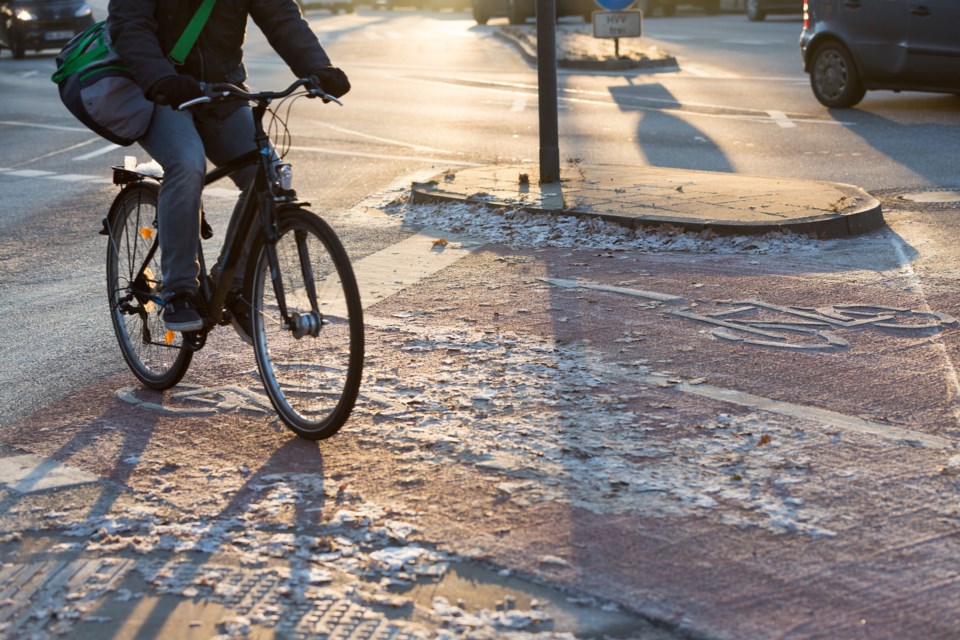Guys, I can’t believe it, but I totally performed a miracle the other night at city council: I got them to spend 30 minutes talking about transit!
Now maybe some people on council were just doing it to take pity on me, but it was relief to feel heard on the craptacular state of our transit system no matter how fleeting it was. On the other hand, the staff response was so rote that the questions just might as well had never been asked in the first place.
You see, when you’ve been fighting for better transit as long as I have, hearing senior staff say that they’re dedicated to making transit better, or at the very least not making it worse, is not enough.
Not only has transit not gotten better in the 20-plus years I’ve lived here, in many significant ways it’s gotten worse. And when council has dedicated themselves to a course of improvement in the past, they’ve invariably welched when they see the cost. Consider again what happened last fall when transit was the only service cut beyond staff recommendations.
But I was driven to speak in the delegates box after attending the Guelph Coalition for Active Transportation’s AGM last week. I heard it mentioned that GCAT was going to delegate again on the proposed bike lanes for Upper Wyndham, and I found this confusing: They already won on the issue, why did they feel the need to double dip at the regular meeting?
GCAT did not end up delegating, but it set a fire in me and it’s not the only time I’ve found GCAT inspiring lately.
The reason I went to the AGM was to hear a presentation from Mayor Cam Guthrie and the city’s manager of transportation planning Jennifer Juste about life in the refreshingly bike-centric Copenhagen. The idea was that Guthrie and Juste were inspired by the cycling experience there, and they want to make changes here in Guelph to be more cycling friendly too. GCAT obviously likes the sound of that.
Me? I thought it sounded like delusion.
They’re comparing Copenhagen, a city that’s stood for a thousand years before anyone had the idea to build a car, to Guelph, which is a city that wasn’t even 100 years old when cars started appearing on our roadways. And on top of that, in the second part of the 20th century, almost any growth in Guelph was tied directly to one’s access to a private automobile.
At the same time, no matter how big Guelph’s grown, its transit system is still rooted in the idea that almost all trips begin and end downtown even if you don’t want to go there. Frequency is also largely frozen in the idea that transit doesn’t have to get you anywhere fast; not only does it take you 45 minutes to get crosstown, you might have to wait 20 or 30 minutes before you can even start the journey.
With these metrics, it might make sense to bike instead of take transit, but we need to be clear about one thing: Once you get west of Edinburgh, east of Victoria, and south of College, Guelph is not a bike friendly city! Bike lanes are lines on the side of the road that drivers freely ignore, there’s no trail connectivity (assuming there are any trails at all), and the further away from downtown you go, the fewer transit options you have.
In my own neighbourhood in the west end, if you live across the road from Margaret Greene Park and you want to access the community garden on Stephanie Drive, you have to make your way through a labyrinth of paths and side streets to get to Imperial or you have to walk the sidewalks and follow the roads down SIlvercreek to Paisley.
That is unless you have a car.
At issue is the giant fence that runs along the Metrolinx tracks, and if it weren’t for the lack of armed guards and landmines, it would be a situation that’s fairly analogous to the Berlin Wall; it’s casually impassible, but if you’re wily enough you might find a dangerous path through it. Where were all our super enthusiastic active transportation advocates and their beloved mayor when this wall went up?!
I’ve long had an opinion that when cycling and trail activists talk to council about their issues that they’re not talking about all areas of the city equally. With a little bit of help, Guelph can be a cycling city, but those of us that live in the donut around the original formation of Guelph in the city’s centre are not included in those plans. We never are.
The day after the GCAT meeting, I saw other people online who were equally confused; if the goal is to make Guelph Copenhagen, then that’s going to take a massive amount of effort, so where is that effort? If you’re rebuilding upper Wyndham Street anyway, adding separated bike lanes is a lay up, but where are the proactive moves to make Guelph a more cycling friendly city more generally?
The answer is the same when it comes to cycling and transit: This is a car town.
Cars are the default when it comes to getting around Guelph and getting around our region, so not using one is a proactive choice to take the second best, or third best option. You’re making an active decision to take the path of more resistance, and it takes a lot of character to choose the least easy option and use the slower and more difficult travel modes.
Unfortunately, we’re at the point with these things where the loftier the rhetoric, the less likely I am to believe it’s something that’s actually going to happen. I’m glad council had a transit talk this week, but it’s going to take a heck of a lot or more than 30 minutes for me to think council has turned a page on this issue.
